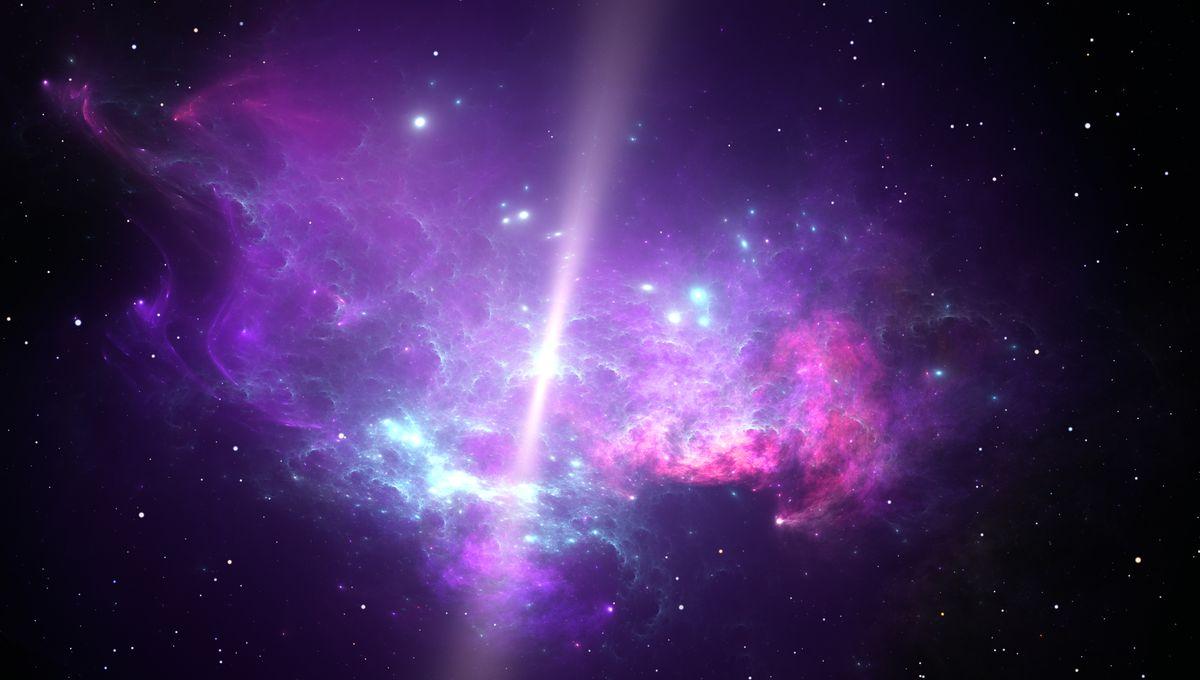-
Nieuws Feed
- EXPLORE
-
Pagina
-
Blogs
-
Forums
The Biggest Millisecond Pulsar Glitch Recorded Represents An Astronomical Mystery

The Biggest Millisecond Pulsar Glitch Recorded Represents An Astronomical Mystery
After decades of ultra-reliable behavior, the pulsar PSR J1713+0747 suddenly changed its output in April 2021. Astronomers have documented the change and subsequent modifications, and offered some tentative explanations for the cause. Nevertheless, they admit the events indicate something deep about pulsars we don’t yet understand.
The rest of this article is behind a paywall. Please sign in or subscribe to access the full content. When supernovae leave a neutron star behind, it spins rapidly, sending out beams of radio waves across the universe, often compared to lighthouses. Over time the spin slows down as radiation takes energy out of the system, and eventually the pulsar beam stops altogether. However, when the neutron star is in a close orbit with a main sequence star, the pulsar can have a second life, drawing material off the companion, which accelerates its spin, creating a millisecond pulsar (MSP). MSPs are not just faster than the original pulsar, but more reliable, the extreme regularity of their spins used as an astronomical timing device. That makes the rare changes both interesting to astronomers, and problematic, and the change shown by PSR J1713+0747 is the most dramatic astronomers have ever seen. “Every pulse of a pulsar is different,” Macquarie University PhD student Rami Mandow told IFLScience. Rather than a smooth rise and fall, pulses shows peaks both in intensity and polarization. Since these pulses happen many times a second, astronomers can observe thousands of them and average their shape, producing what is known as the “stable integrated profile.” This has a unique signature. Rami Mandow Every pulsar has a different stable integrated profile, and the name is no lie, since it is usually very stable, unchanged over decades of observations, and as distinctive as an individual light house’s signal. “These profiles are more than just data - they are windows into the pulsar’s emissions, magnetosphere, and rotation,” Mandow wrote on the website he edits. “Every now and then a few MSPs have shown the integrated profile changing, and it shouldn’t,” Mandow told IFLScience. Nevertheless, in most cases the change has been at the edge of our capacity to detect it. PSR J1713+0747’s was far more dramatic. “The main peak of the profile has become narrower,” Mandow told IFLScience. “The base (the lower quarter) has broadened. The polarization of the peak has also narrowed, while the base polarization broadened as well.” The effect has seen across a wide range of wavelengths, but more at some than others. A simplified comparison of PSR J1713+0747 before and after its 2021 shift. Image courtesy of Rami Mandow; credit: R. Mandow et al., 2025 Although the spacing between the peaks has barely changed, Mandow told IFLScience astronomers rely on the consistency of the shape to time pulsar behavior, and as a result have dropped PSR J1713+0747 from their samples. Some profiles have appeared to change because of something happening in the interstellar medium between the pulsar and us, but Mandow told IFLScience, “This has a unique signature, and it’s not the case here.” After more modest glitches, some MSPs have reverted to their original form, but four years after PSR J1713+0747’s midlife crisis it’s yet to recover its original state, although it has moved somewhat back in that direction. Mandow and co-authors think that either there has been a reconfiguration in PSR J1713+0747’s powerful magnetic field lines, with a shift in the base of the lines, or the plasma that fills its magnetosphere has become clumpier. They’re not sure which of these options is right, nor the underlying cause that would cause either. PSR J1713+0747 is orbited by a white dwarf, the remains of the main sequence star whose outer layers caused it to spin up to its current speed. However, Mandow told IFLScience the team are confident the white dwarf was not involved. For one thing, the orbit is too distant for it to have such an effect. Any such influence would also be expected to leave a signature not seen here. A more detailed comparison of PSR J1713+0747 before it changed, shortly after and after two years had passed. Image courtesy of Rami Mandow; credit: R. Mandow et al., 2025 One explanation the authors offer is that an asteroid burned up in PSR J1713+0747’s magnetosphere, throwing its signal off. Mandow told IFLScience others are more qualified to assess the size of the object required to have this much effect. However, he added that the asteroid theory is considered unlikely, as the dramatic events the system has been through would likely have cleared the surrounding space. An interstellar visitor such as 3I/ATLAS cannot be ruled out, but Mandow noted, “Neutron stars are a tiny target, and you’d need a direct hit.” Still, no one has a better alternative. Astronomers track pulsar timing in the search for gravitational waves with periods too long for Earthly detectors. As these go rippling through the galaxy, they should change the timing of pulsars in ways undetectable for a single star, but that might show up with a samples grouped by location. Mandow said PSR J1713+0747 has been dropped from every group’s sample, despite previously being a “popular pulsar”, one used by many study groups because it was bright and visible to radio telescopes worldwide. A single loss barely matters, but Mandow told IFLScience, “New radio telescopes like the SKA will have far greater sensitivity.” If smaller versions of this event are common, that could disrupt studies relying on that greater precision. “My next project is looking at modelling PSR J1713+0747 so everyone can use the data post 2022,” Mandow told IFLScience. If he can make that work, it could be applicable to smaller glitches if needed. The paper is published open access in Publications of the Astronomical Society of Australia. 



